I did some non-linear regression and retrieved the fitting coefficients/parameters b0,b1,b2, and b3 in a data frame df. I would like to plot the same function with parameters from each row as an overlay with the initial data points (from df2) that I have used for fitting. All contained in one single graph. Any help is appreciated. Thank you in advance!
| group | b0 | b1 | b2 | b3 |
|---|---|---|---|---|
| abc | 6.3 | 8.9 | 1.66 | 0.025 |
| def | 5.1 | 8.9 | 1.48 | 1.27 |
| ghi | 5.5 | 9.0 | 1.41 | 1.03 |
group<-c("abc","def","ghi")
b0 <- c(6.3,5.1,5.5)
b1 <- c(8.9,8.9,9.0)
b2 <- c(1.66,1.48,1.41)
b3 <- c(0.025,1.27,1.03)
df <- data.frame(group,b0, b1, b2,b3)
I have tried to apply the solution from other posts but couldn't make it work.
The following just connects the points of all 3 functions without distinguishing between the group, as it does for geom_point() output
f <- function(x, b0,b1,b2,b3) b0*exp(-0.5*((x-b1)/b2)^2) + b3
ggplot(df2, aes(x = x, y = y, color=group))+
geom_point() +
stat_function(fun = f, args = list(b0 = df$b0, b1 = df$b1, b2 = df$b2, b3 = df$b3))
And the solution from here approach 2 returns
1: Computation failed in
stat_function(): non-numeric argument to binary operator
coeflines <-
alply(as.matrix(df), 1, function(df) {
stat_function(fun=function(x){df[2]*exp(-0.5*((x-df[3])/df[4])^2) + df[5]}, colour="grey")
})
ggplot(df2, aes(x=x, y=y, color=group)) +
scale_x_continuous(limits=c(0,15)) +
scale_y_continuous(limits=c(0,15)) +
coeflines +
geom_point()
Thank you for your help!
